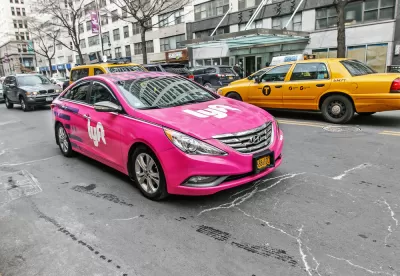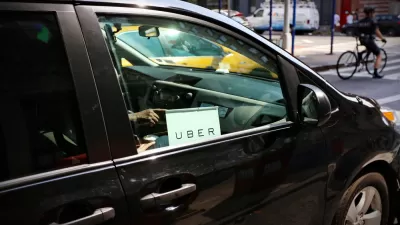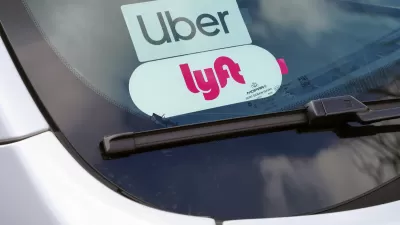A state bill would force gig companies to treat workers fairly and would stanch the flow of subsidies that keep customer costs artificially low.

The gig economy exploits workers, and California lawmakers need to fix a broken system, argues Zakhary Mallett. Assembly Bill 5 would limit the ability of companies such as Uber and Lyft to classify workers as independent contractors and would provide worker protections.
Mallett worked as an Uber driver, and he makes the case that riders are not paying the full cost of their trips. Instead, the rides are subsidized by underpaying workers and depending on venture capital. For example, he explains that driver incentives to work during certain times and in certain locations result in an excess of drivers, longer wait times, and costs that are not passed on to customers.
"Take, for instance, a 32-minute trip I completed from South of Market to San Rafael: I waited 24 minutes to get that trip after my last drop-off and took in $66.98, while the rider paid just $38.71 — meaning Uber lost $28.27 on that trip," he writes. Mallett also discusses the additional societal costs from drivers flooding city streets, including traffic congestion and decreased available parking.
"Similarly, the companies have circumvented antitrust principles by using venture capital to subsidize their services at the expense of taxis, rental car companies, private parking companies, public transit and more. This isn’t innovation in urban transport and deliveries; it’s innovation in ripping off people, cities and industries," he notes.
FULL STORY: The distorted economics of ride hailing must be fixed by California law

Alabama: Trump Terminates Settlements for Black Communities Harmed By Raw Sewage
Trump deemed the landmark civil rights agreement “illegal DEI and environmental justice policy.”

Planetizen Federal Action Tracker
A weekly monitor of how Trump’s orders and actions are impacting planners and planning in America.

The 120 Year Old Tiny Home Villages That Sheltered San Francisco’s Earthquake Refugees
More than a century ago, San Francisco mobilized to house thousands of residents displaced by the 1906 earthquake. Could their strategy offer a model for the present?

In Both Crashes and Crime, Public Transportation is Far Safer than Driving
Contrary to popular assumptions, public transportation has far lower crash and crime rates than automobile travel. For safer communities, improve and encourage transit travel.

Report: Zoning Reforms Should Complement Nashville’s Ambitious Transit Plan
Without reform, restrictive zoning codes will limit the impact of the city’s planned transit expansion and could exclude some of the residents who depend on transit the most.

Judge Orders Release of Frozen IRA, IIJA Funding
The decision is a victory for environmental groups who charged that freezing funds for critical infrastructure and disaster response programs caused “real and irreparable harm” to communities.
Urban Design for Planners 1: Software Tools
This six-course series explores essential urban design concepts using open source software and equips planners with the tools they need to participate fully in the urban design process.
Planning for Universal Design
Learn the tools for implementing Universal Design in planning regulations.
Clanton & Associates, Inc.
Jessamine County Fiscal Court
Institute for Housing and Urban Development Studies (IHS)
City of Grandview
Harvard GSD Executive Education
Toledo-Lucas County Plan Commissions
Salt Lake City
NYU Wagner Graduate School of Public Service





























